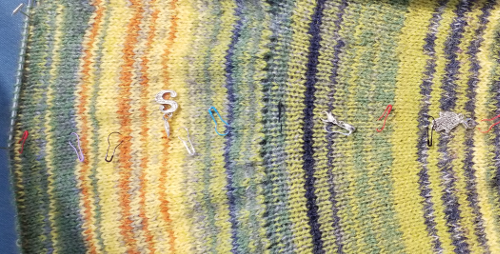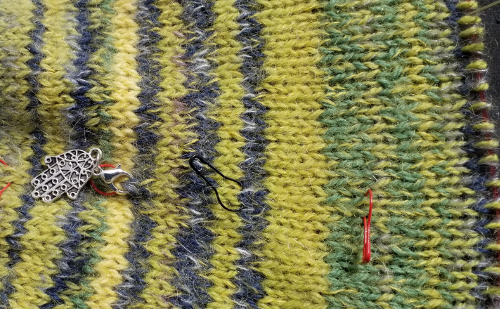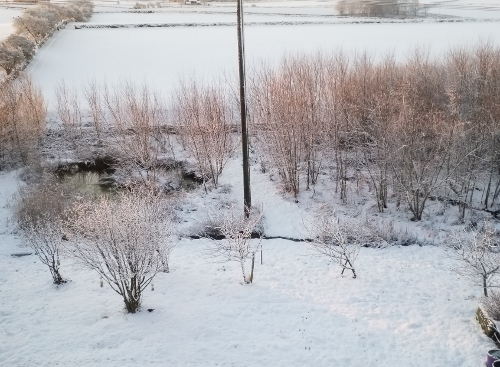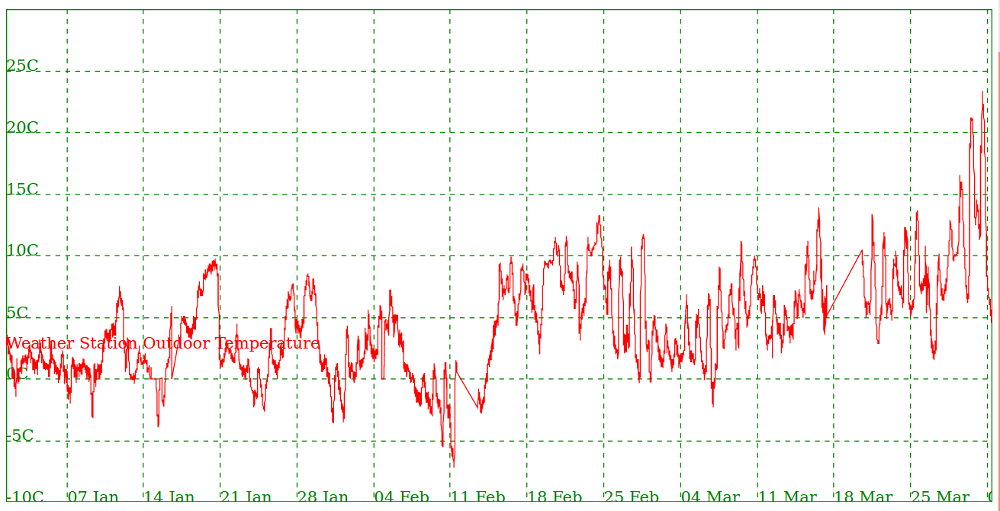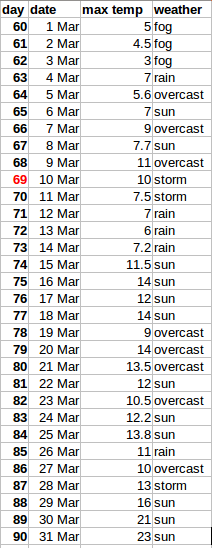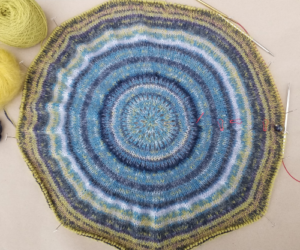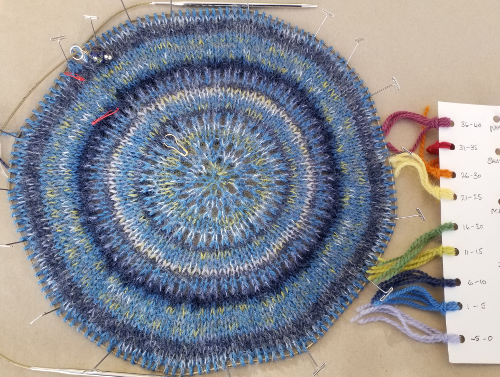
The second Quarter of 2021, shows a steady rise in temperature overall, although there were a few blips along the way, notably May which was cold and wet a lot of the time. The 90-day graph for outdoor temperature looks like this:

The quarter comprises days 91 to 181 inclusive. Of those 91 days, we had:
- 43 days of predominantly sunny weather
- 28 days of overcast skies
- 15 days of rain
- 2 days of snow
- 2 days of storm
- 1 day of high winds
[I define stormy days as a combination of high winds and lashing precipitation (either rain or snow).]
The 43 days of sun are no surprise, but only 15 days of rain in 91 days overall is not much. There was no rain in April, just 2 days of snow, but May more than made up for it with 12 days of rain (plus light showers on other days). April had one day of high winds, and May had 2 days of storm, but otherwise the period has been very calm. The rain in May caused everything – fruit, vegetables, grass, and weeds – to flourish, and we benefited in June with good crops of strawberries, currant bushes heavy with ripening fruit, and peas and beans setting lots of pods.
None of the data is particularly surprising; the move of the rainy season from April to May has been happening gradually for a number of years. And I would not expect us to be having storms or high winds at this time of year, they usually happen in late September and October. All in all, a calm period of mostly sunny skies.
